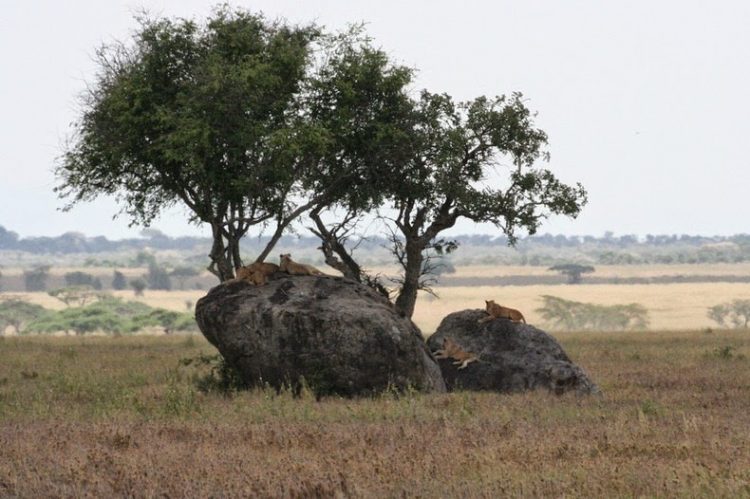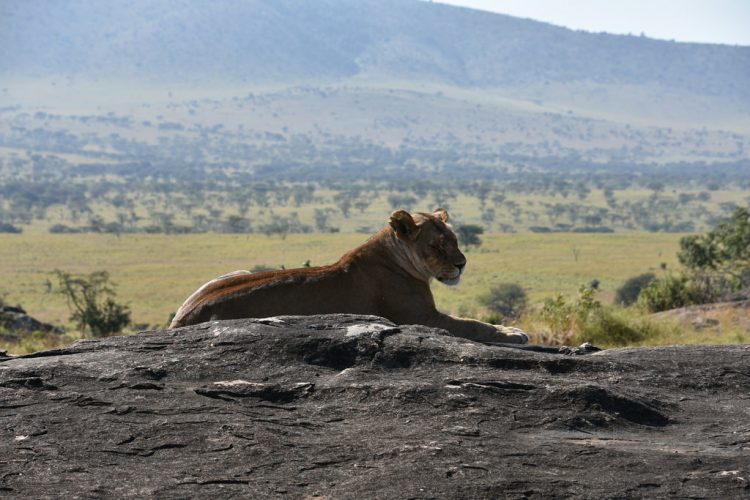Kopjes of Serengeti is about 30 Square Kilometers of the vast plain of grassland, woods, and swamps stretching from North-Western Tanzania into South-Western Kenya. These plains are home to more than 70 large mammals and 500 avifauna species including the largest terrestrial mammal migration in the world. The plains of Serengeti are too flat to hold water; the hollows in the rock surfaces provide catchments for rainwater.
What are Kopjes of Serengeti?
Dotting this vast savannah are outcrops of granite that stick out like rocky islands in a sea of grass. They are called kopjes, formed with soft volcanic rock and ash. Its covers Serengeti were eroded away to expose the extremely old metamorphic rock below. Kopjes are scattered throughout Serengeti, one particular found much publicity for providing inspiration for some of the scenes in the movie “The Lion King” later named it Simba Kopje.
The rock is standing impressively around plains of savannah with vegetation surrounded by bushes and grass. These wonderful metamorphic rocks consist of very hard granite accomplished of resisting erosion from rain and harsh tropical winds. Kopjes are refuges for life in the Serengeti. The natural structures help special plants grow by sticking roots into the cracks in the rocks that trap soil and nutrients.
It also provides a scenic contrast to the nearby grasslands. It also offers a habitat for numerous creatures. The presence of many plants, caves for dwelling, water, and a vantage point for Serengeti’s various predators. It piles of ancient rocks that poke through the more soils and surface rocks. Therefore, rocks were laid down over 500 million years ago all over Africa. These kopjes, also known as inselbergs (island mountains), add to the already dramatic backdrop of the Serengeti landscape.
The volcanic activity from volcanoes of the Ngorongoro highlands deposited a layer of rocks and ash, about one million years ago. It creates rich and fertile soil that produces short, sweet grass while raining. When the surface rock and soil wore away, it exposed the uneven top of the granite layer forming kopjes.
Various animal species only live on kopjes because of these plants, the rocky habitats, and hiding places they offer. Moreover, lions regularly use the kopjes as vantage points. Because this is an ideal place to bask in the sun as well as hide their cubs. Someone can see cheetahs using kopjes to assist them in scouting the area for a potential meal.
Kopjes of Serengeti are weathered cracked and the rounded surface is home to insects, birds, lizards, and snakes, to mammals such as shrews and mice. The perfectly elevated rocks are ideal places to warm up in the morning or evening sun. It provides an ideal viewpoint for animals to survey the plains for food. These kopjes play a pivotal role in the ecosystem. They are habitats for different kinds of flora and fauna which can only be found in and around the formations.
An interesting mammal Hyraxes exclusive to the kopjes is the Rock Hyrax. This mammal is about the size and shape of a rugby or football. This animal eats grass and herbs around the kopjes. Other animals that have made a home on kopjes are the small size antelope called “klipspringer”. Snakes and agamas thrive here thanks to the ample hiding spaces as well as an abundance of food.
Also Read: The Breathtaking Real Life of Svetloe Lake in Serbia










Source: AP! Tanzania Experience! Wild Eye






